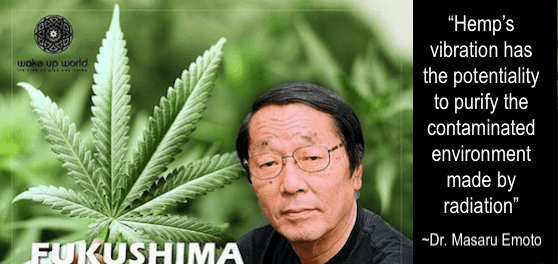One of the most profound and lesser-known benefits of the humble hemp plant is its ability to cleanse the very earth it grows in. Through a natural process called phytoremediation hemp literally leaches heavy metals, toxins, and even radiation from contaminated soil, offering a powerful, living solution to some of our planet’s most pressing environmental challenges.
Hemp vs. Nuclear Fallout: A Tale of Two Disaster Sites
The sheer power of hemp as a purifier is most evident when looking at nuclear disaster zones. For years, scientists and agriculturalists have been planting industrial hemp in the soil surrounding the Chernobyl disaster site in Ukraine. The results have been remarkable, with the plants effectively absorbing radioactive contaminants and helping to remediate the poisoned land.
This success led the renowned Dr. Masaru Emoto to urge Japan to adopt the same strategy following the 2011 meltdown at the Fukushima Daiichi nuclear power plant. He saw hemp as a critical tool for purifying the irradiated Japanese countryside.
So why the hesitation? Progress has been slowed by legal frameworks like the Cannabis Control Law, established in Japan in 1948 during the U.S. occupation. Similar to historical restrictions in the United States, this law requires a special license to grow industrial hemp, which is notoriously difficult to obtain. It’s a legal hurdle preventing a natural solution from being deployed at scale.
What Happens to Hemp After It Cleans Up?
A common question is whether this “toxic cleanup crew” can be used afterward. For consumption, the answer is a clear no. We would never want hemp grown in polluted soil to be used for products like CBD oils or food, as it would contain concentrated levels of the contaminants it absorbed.
However, the hemp biomass may still have valuable industrial applications. The toxins are often locked within the plant’s fibrous stalks. This means the harvested hemp could potentially be used to create building materials, like hempcrete, or even certain biofuels, safely sequestering the contaminants.
Interestingly, scholar Elizabeth Pilon-Smits notes that in some cases, the “contaminants” are actually micronutrients like Selenium, Iron, or Zinc. When absorbed by the plant, this can create a unique opportunity.
Food or feed enriched with a micronutrient like [Selenium or Iron or Zinc] is considered biofortified, and may have added value.
Elizabeth Pilon-Smits
This opens the possibility that, after careful testing and dilution, some of this biomass could be processed into biofortified animal feed, turning a cleanup process into a value-added product.
More Benefits of Hemp
Hemp’s power to heal the planet extends far beyond phytoremediation. It is a true multipurpose tool for sustainability.
- Carbon Sequestration: Hemp is a “carbon sink,” meaning it absorbs more CO₂ per hectare than most forests. As it grows, it rapidly captures carbon from the atmosphere, helping to combat climate change.
- Sustainable Farming: It’s a dream crop for regenerative agriculture. Hemp grows quickly, requires significantly less water than crops like cotton, and naturally outcompetes weeds, reducing the need for chemical herbicides. Its deep roots also prevent soil erosion and enrich the soil for future crops.
- A Renewable Resource: Hemp can be used to produce a staggering array of products, including paper, textiles, bioplastics, and building materials. Using hemp can drastically reduce deforestation and our reliance on petroleum-based plastics.
- Soil Regeneration: Even when not used for phytoremediation, the simple act of growing hemp improves soil structure. Its root system aerates the earth, and the nutrients from its leaves and stalks enrich the soil as they decompose.
- Hemp Graphene: Our work with BatteryCoin is assisting with hemp graphene batteries with the goal that every person on earth has their own battery in case of infrastructure failure.
From cleaning up our worst environmental disasters to providing the raw materials for a sustainable future, hemp is more than just a plant—it’s a pathway to a healthier planet.
To stay informed of CBD and hemp news and updates, subscribe to our newsletter.
Editor’s Note: This article was originally published in 2015 and has been updated on September 15, 2025, for accuracy and comprehensiveness.
(photo credit – Wake Up World)


